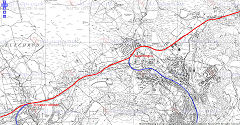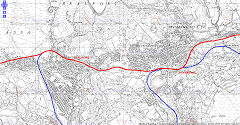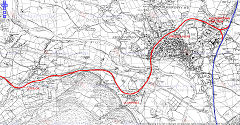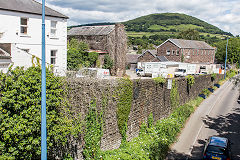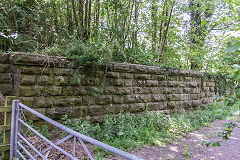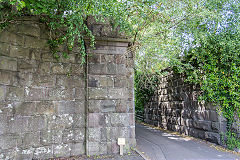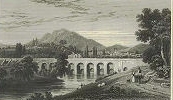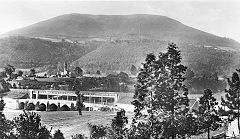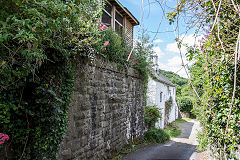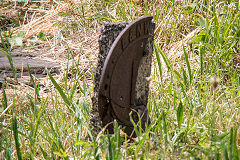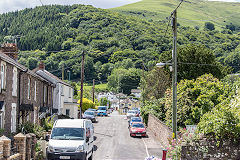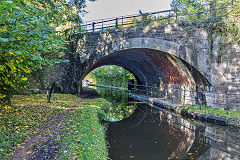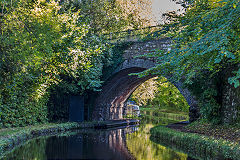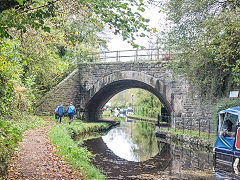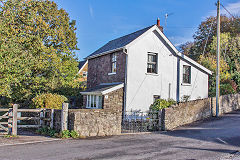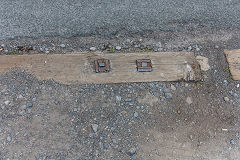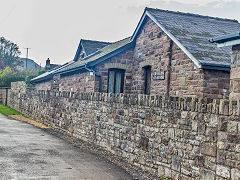The Industrial Archaeology and History of the Heads of the Valleys Railways and Tramroads
Or click on the button to go to :-
Click on the thumbnail to enlarge a photo or map and sometimes read more about it.
Then click 'Full Size' on the toolbar to see it in all its glory.
Through the Clydach Gorge to Brynmawr
Clydach Station - SO 2320 1270
Clydach viaduct, Station and tunnel
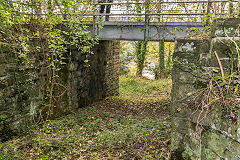
Tankers Row underbridge
|

Tankers Row water tank
|
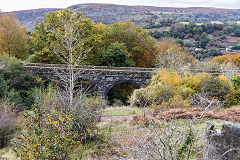
Clydach Viaduct
|
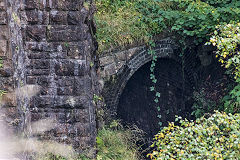
Clydach Viaduct culvert
|

Clydach Viaduct
|
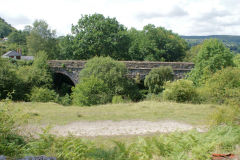
Clydach Viaduct
|
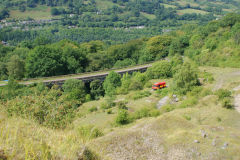
Clydach Viaduct
|
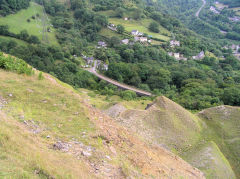
Clydach Viaduct from Tyla
|

Clydach Station
|
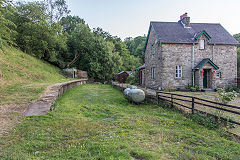
Clydach Station
|
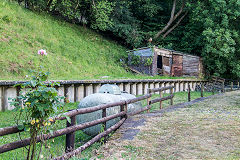
Clydach Station
|

Clydach Station
|
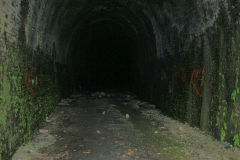
Clydach Tunnel North bore to East
|
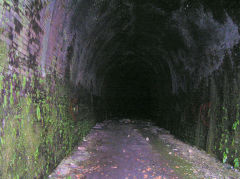
Clydach Tunnel North bore to East
|
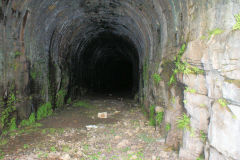
Clydach Tunnel South bore to East
|

Clydach Tunnel South bore to East
|
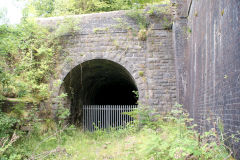
Tunnel West portal, North bore
|
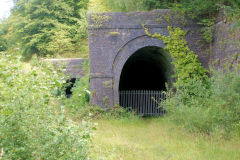
Tunnel West portal, South bore
|
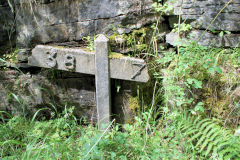
Clydach Tunnel gradient post
|
|
Llanelly Quarry - SO 22230 1247
Llanelly Quarry supplied the limestone to Clydach Ironworks originally using the Llammarch Tramroad of 1795. The 1811 incline actually ended in the quarry area so the MTAR had to build two arches, one for the incline and the other for the tramroad on up to Waunllapria. The MTAR put in sidings from the Eastern end and two sets of limekilns were built at either end, the eastern set have a headstone iscribed 'GP 1892'. The quarry and sidings closed in the 1930s and reopened for roadstone from 1951 to 1963 using road transport.

Sychnant Viaduct
|
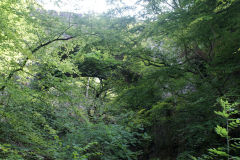
Sychnant Viaduct
|
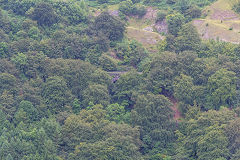
Sychnant Viaduct
|
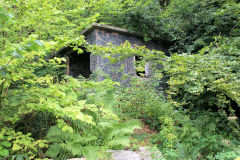
Building at Sychnant Viaduct
|
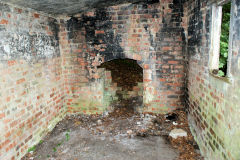
Building at Sychnant Viaduct
|
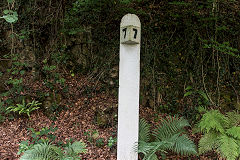
Quarry junction milepost
|
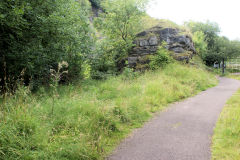
Llanelly Quarry siding junction
|
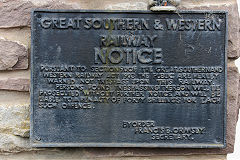
GS & WR notice board, Llanelly Hill
|
Darenfelen - SO 2180 1230
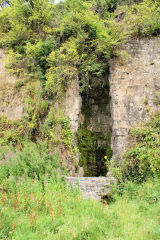
Darenfelen drainage shaft
|
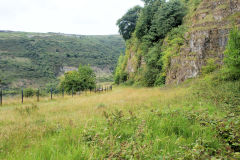
Trackbed at Darenfelen
|

Trackbed at Darenfelen
|

Trackbed at Darenfelen
|
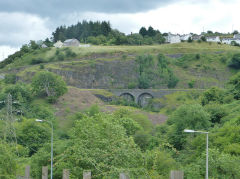
Trackbed at Darenfelen
|

Trackbed retaining arch
|

Building foundation
|
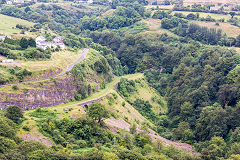
Gellifelen Tunnel approach
|
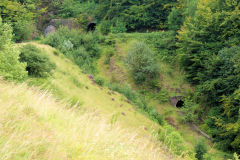
Gellifelen portals and culvert
|
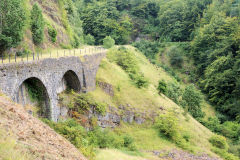
Trackbed at Darenfelen
|
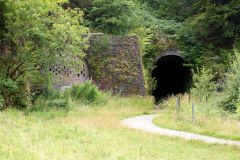
Gellifelen Tunnel, Eastern portals
|
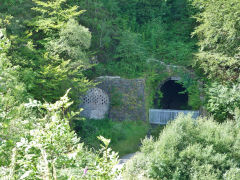
Gellifelen Tunnel, Eastern portals
|
The culverts under the embankment at Darenfelen - SO 2181 1214
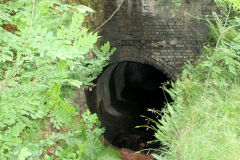
Darenfelen 'dry' culvert
|
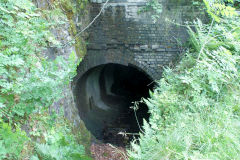
Darenfelen 'dry' culvert
|
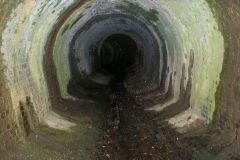
Darenfelen 'dry' culvert
|

Darenfelen 'dry' culvert
|
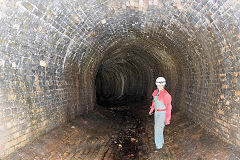
Darenfelen 'dry' culvert
|

Darenfelen 'dry' culvert
|
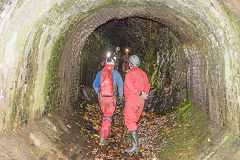
Darenfelen 'dry' culvert
|
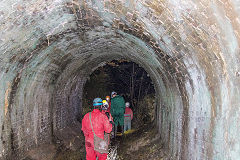
Darenfelen 'dry' culvert
|

Nant Llammarch culvert
|
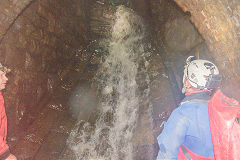
Nant Llammarch culvert
|
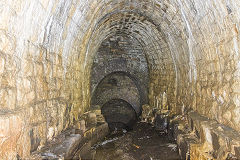
Nant Llammarch culvert
|
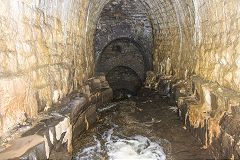
Nant Llammarch culvert
|
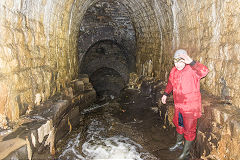
Nant Llammarch culvert
|
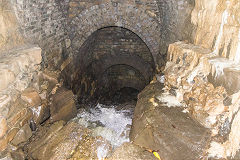
Nant Llammarch culvert
|

Nant Llammarch culvert tramplate
|
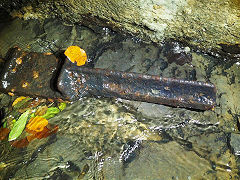
Culvert tramroad sill
|
Gellifelen Tunnel - SO 2150 1209 to SO 2178 1213
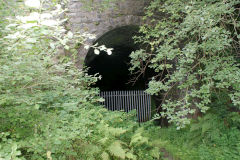
Tunnel, West portal, South bore
|
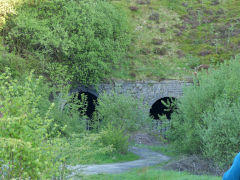
Gellifelen Tunnel, West portals
|
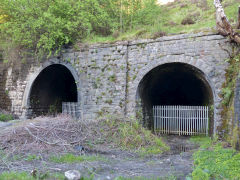
Gellifelen Tunnel, West portals
|

Gellifelen tunnel North bore
|
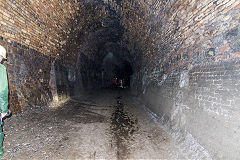
Gellifelen tunnel North bore
|
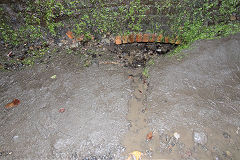
Gellifelen tunnel North bore
|
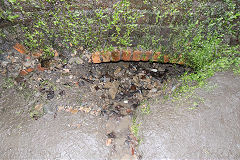
Gellifelen tunnel North bore
|
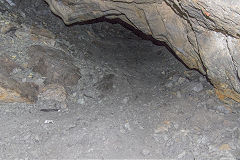
Gellifelen tunnel North bore
|

Gellifelen tunnel North bore
|
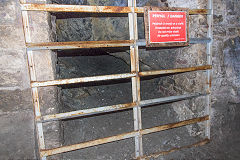
Gellifelen tunnel North bore
|

Tunnel, East portal, North bore
|
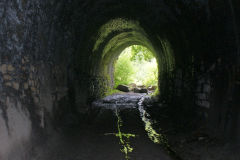
Tunnel, West portal, North bore
|
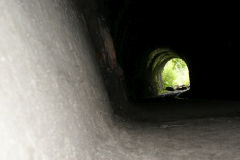
Tunnel, West portal, North bore
|
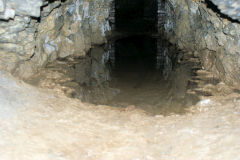
Tunnel, North bore crosscut
|

Tunnel, North bore crosscut
|
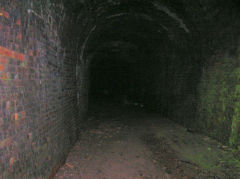
Tunnel, South bore to East
|
Gellifelen Halt - SO 2140 1225
Looks like its still waiting for a train to come along!

Gellifelen Halt lamp post
|
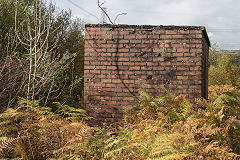
Gellifelen Halt
|

Gellifelen halt
|

Gellifelen Halt Eastbound
|
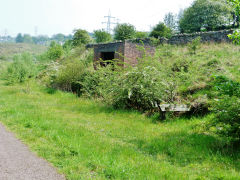
Gellifelen Halt Westbound
|
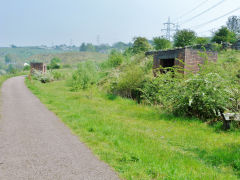
Gellifelen Halt Westbound
|

Gellifelen Halt tin hut
|
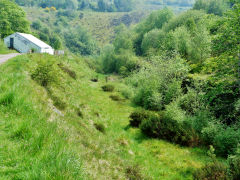
Trackbed at Gellifelen Halt
|
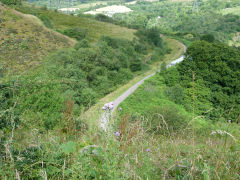
Trackbed at Gellifelen Halt
|
On to Brynmawr
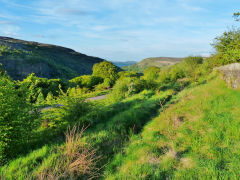
Baileys Tramroad and the MTAR
|

Bridge abutment
|

An unusual trackside culvert
|

1/2 mile marker post
|
Across the Heads of the Valleys
From Brynmawr to Merthyr Tydvil
Brynmawr - SO 1873 1150
Brynmawr West Junction was where the GWR branch to Nantyglo, Abertillery and Aberbeeg curved off from the MTAR. Underneath both lines ran the Disgwylfa Tramroad, which linked the limestone quarries at Disgwylfa with Nantyglo Ironworks.
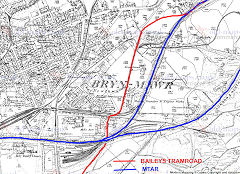
The MTAR in Brynmawr
|
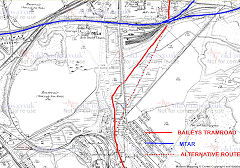
The MTAR in Brynmawr
|
|
|
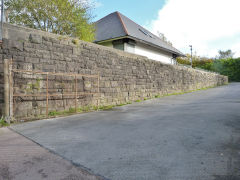
Retaining wall under Platform 4
|

Western Valley Junction, MTAR
|
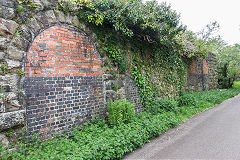
Western Valley Junction, MTAR
|
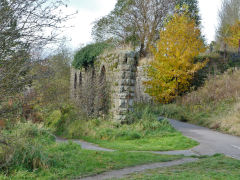
Western Valley Junction, MTAR
|

Western Valley Junction, MTAR
|
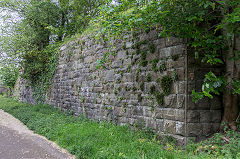
Western Valley Junction, MTAR
|
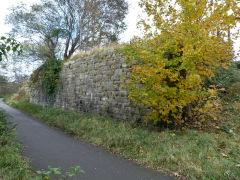
Western Valley Junction, MTAR
|
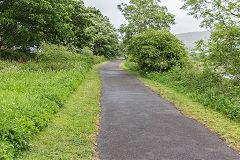
The MTAR towards Brynmawr
|
Beaufort Station - SO 1687 1171
Beaufort Station, goods yard and tunnel

Level to Parfitt's Pit
|
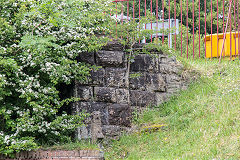
Beaufort Station road bridge
|
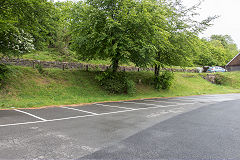
Beaufort MTAR trackbed
|
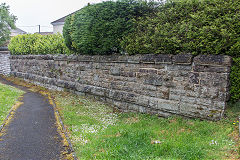
Beaufort tunnel portal
|
Blaen-y-Cwm Viaduct, Sirhowy - SO 1325 1090
The 'Nine Arches' viaduct across the Sirhowy River near Nant-y-Bwch Station

Blaen-y-Cwm Viaduct
|
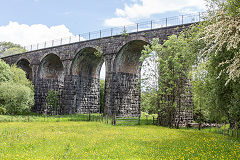
Blaen-y-Cwm Viaduct
|

Blaen-y-Cwm Viaduct
|
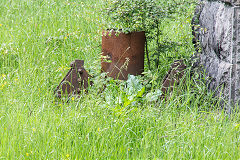
Blaen-y-Cwm Viaduct
|
Rhymney Bridge - SO 1040 0937
The junction for the LNWR / GWR joint line connecting the MTAR to Rhymney,
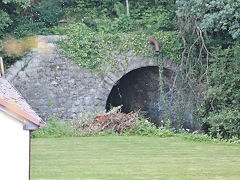
Rhymney River under the MTAR
|
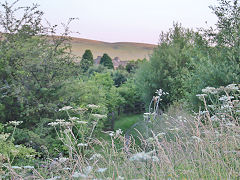
The LNWR / GWR link
|
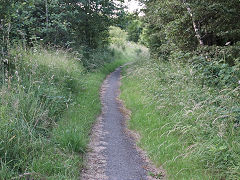
The LNWR / GWR link
|
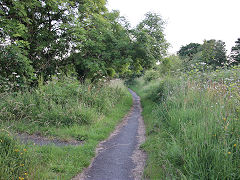
The LNWR / GWR link
|
Dowlais
From Dowlais Top through the Morlais Tunnel to the Brecon & Merthyr Railway junction
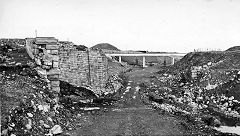
Dowlais Top and A465
|
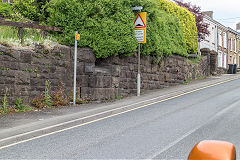
Dowlais High Street Station
|
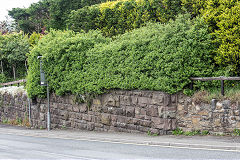
Dowlais High Street Station
|

Dowlais High Street Station
|

Bridge abutments, Dowlais
|
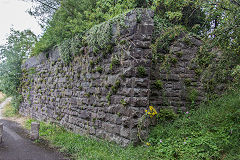
Bridge abutments, Dowlais
|
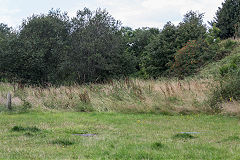
MTAR trackbed, Pen-wern
|
|
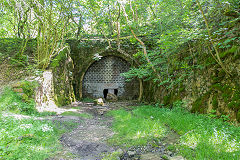
Morlais Tunnel, Merthyr Tydvil
|
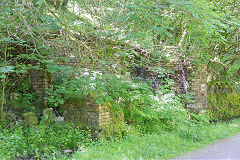
Morlais Junction signal box
|
|
|
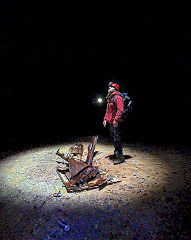
Morlais Tunnel, Merthyr Tydvil
|
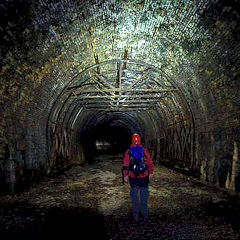
Morlais Tunnel, Merthyr Tydvil
|

Morlais Tunnel, Merthyr Tydvil
|
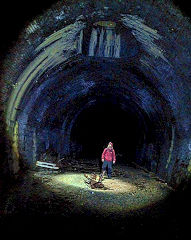
Morlais Tunnel, Merthyr Tydvil
|



